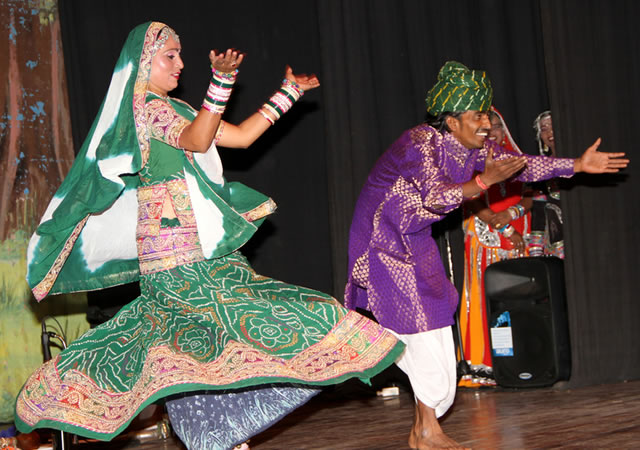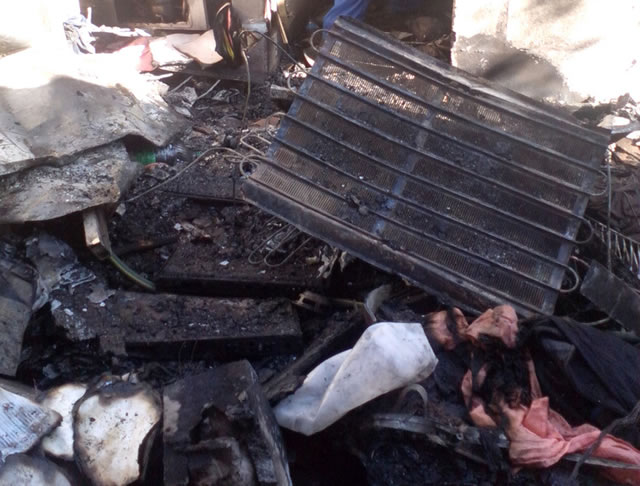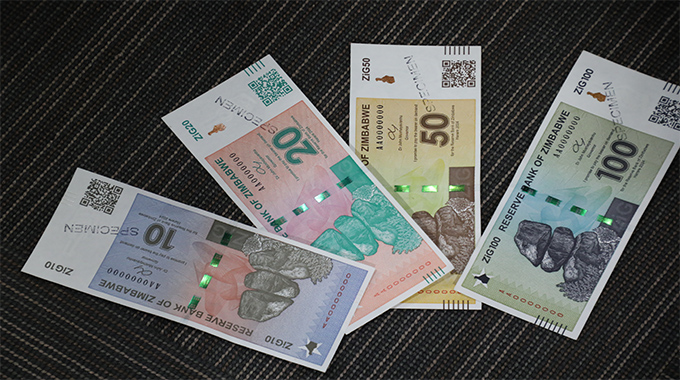Indian dance troupe set Byo ablaze

 Bongani Ndlovu Showbiz Correspondent
Bongani Ndlovu Showbiz Correspondent
COLOURFUL, dazzling, energetic and rich with cultural texture, are words that can describe the incredible performances witnessed at the Bulawayo Theatre on Thursday night when an Indian group Moru Sapera Dance Party shared the stage with four of Bulawayo’s own dance groups, Umkhathi Theatre works, Isizwe Sabatsha, Ezimnyama Dance Ensemble and Izenzo Performing Arts.
The Indian group is in Zimbabwe to attend the Harare International Festival of the Arts.
The event was well attended with a near capacity crowd as the Indian community came out in full force to support their kith and kin.
Moru Sapera Dance Party did not disappoint, with a sterling performance that can rival any Bollywood dance movie scene.
Pick of the performance was when one of the male dancers came on stage to showcase his fire-eating and spitting prowess.
Bulawayo businessman Raj Modi who is part of the Bulawayo Hindu Association was invited on stage to hold one of the fire sticks. A visibly shaken Modi gathered his composure and participated in the act despite the flames shooting dangerously close to him at some stage.
His shakiness contributed immensely to the success of the act as the close calls with the flames kept the audience on the edge of their seats, and kept them in perpetual suspense as they were alive to the imminent danger stalking him at every instant.
It was easy to think, judging from their extravagant performance and colourful costumes, that one was dead centre in a Bollywood movie. The loud drumming using the two headed drum called the dholak formed enchanting rhythms and added the coveted “theatre feel” to the event.
Four women came on stage balancing brass pots that had fire lit in them and were greeted with rapturous applause. They waved their hands and arms and stomped their feet to the beat of the musicians synonymous with the Indian dancing.
In the grand finale, a woman came to the stage carrying a brass pot on her head. The woman would dance and then add another brass pot. When she was on her fifth pot the audience thought she would stop but she went on to add two more without missing a step in her intricate dance.
Award-winning Umkhathi Theatre works came on stage with their drums and dazzled the crowd. The group showed why they won the Chibuku Neshamwari Dance Competition last year as they danced, clapped and drummed the night away.
Izenzo Performing arts took it a notch up when they performed the Jerusalema/Mbende dance that made a lasting impression on the crowd. The Nkulumane- based group belied the fact that they were formed 10 months ago as they put up a near perfect performance.
In an interview on the sidelines of the show, Mahaver Nath, the Indian group coordinator, said he was impressed with the amount of energy that Umkhathi, Isizwe Sabatsha, Ezimnyama and Izenzo performing arts groups had on stage.
Speaking through a translator, Joseph Rego, Nath said it was important for cultures from Zimbabwe and India to mix and mingle. “The levels of energy that were shown by the Zimbabwean groups were surprising and impressive at the same time. As performers energy on stage is very important so that the crowd enjoys your presentation,” he said.
Nath said in India they were referred to as gipsy or banjara in their native tongue because they travel around the province with their dancing.
“We travel around in the Rajasthan province and sing and dance for the people there. You can call us gipsies because of the nature of our culture of music,” he said.
Asked on what inspires their music Nath said they wanted to tell stories that people know such as love, marriage and heroism.
The dance is named after two of the most famous Rajasthan dances, Moru and Sapera.
The Sapera dance of Rajasthan was invented by the Kalbelias and is one of the most famous dances of this state.
It is said to be the heart of Rajasthan’s culture and tradition. Because the Kalbelia tribe always moves from one place to another, this dance culture spread out all over Rajasthan. The dance performances are for female dancers who participate along with male musicians who produce a rhythm using traditional instruments like the dholak, sitar and sarangi.
The ensemble, which was enroute to HIFA, made the visit to the city courtesy of Bulawayo mogul and managing director of Choppies Enterprises, Modi, who said it is always in his heart to bring together Zimbabwean and Indian culture.
Modi said if the relationship grows then some Zimbabwean cultural groups would travel to India.







Comments